Index
- EVGA GTX 770 Superclocked ACX 2GB reviewed
- The Packaging
- A closer look at the ACX cooler
- A closer look at GTX 770 SC ACX continued
- Testbed
- 3DMark
- Hitman Absolution
- Sleeping Dogs
- Tomb Raider
- Dirt Showdown
- BioShock Infinite
- Tessellation - Heaven
- Thermals and Noise
- Overclocking
- Consumption
- Conclusion
- All Pages
EVGA is constantly working to improve its custom components and come up with cards capable of trumping the competition. Even in its reference form, the GTX 770 is a top notch card with a great cooler and Nvidia partners really needed to get creative this time around. As a result, EVGA’s GTX 770 Superclocked uses the ACX (Active Cooling Xtreme) cooler which we already had a chance to try out on earlier cards, including the GTX 780 Superclocked ACX. The new ACX cooler impressed us both in terms of performance and low noise.
Before we proceed, let’s see how it looks. It is a dual-slot, dual-fan design and it looks like it means business.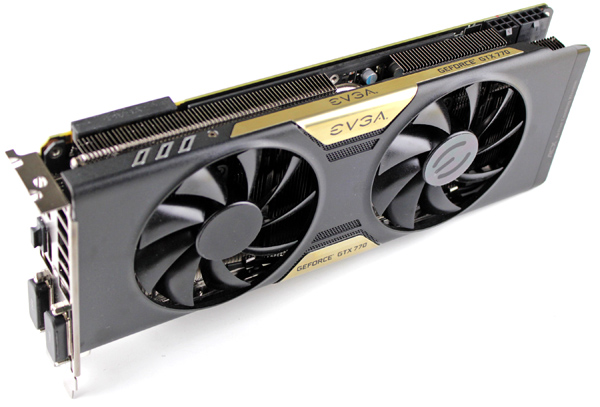
High-end graphics cards generate plenty of heat and many AIB partners resort to massive triple-slot coolers to reduce noise and allow higher clocks, while keeping the GPU under the thermal threshold. With the ACX cooler EVGA took things to the next level, as the reference cooler was tough to improve upon. Since it is a dual-slot design, it is also perfect for enthusiasts who plan to use the card in three-way or four-way SLI setups.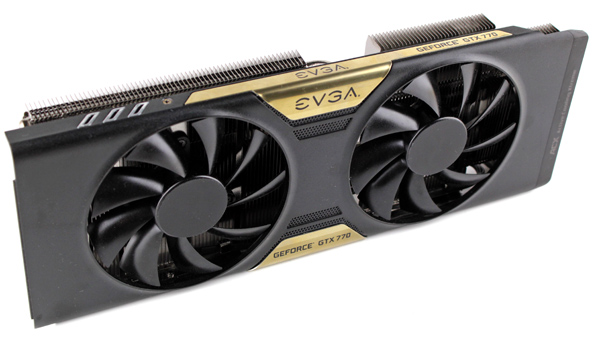
EVGA designed a special heatsink with a lot of dissipation surfaces. The heatsink was designed in such a way to minimize airflow turbulence between the fans, with clever barriers directing the airflow.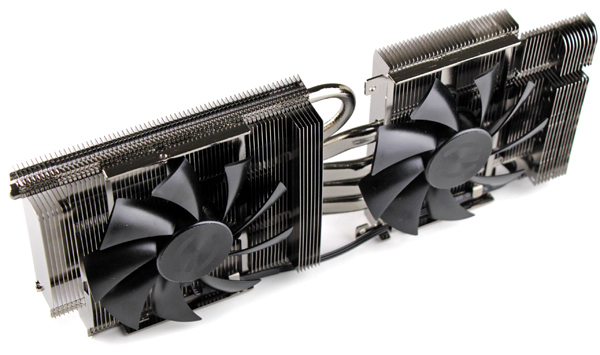
To maximize dissipation volume, EVGA used a few tricks, such as tall fins at the sides of the cooler. Airflow channels provide better airflow and prevent pockets of hot air from creating inside the heatsink and they should be kept clean.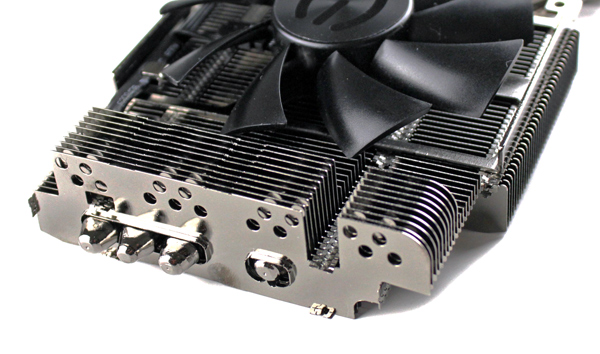
The ACX cooler comes with five elaborate heatpipes.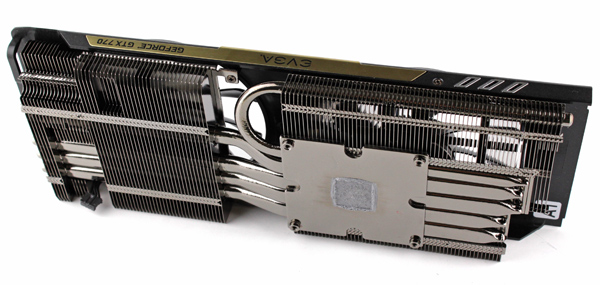

The Power Logic PLA09215B12H fan has some good features. First of all it was chosen due to its dense, curved blade design and double ball bearing design.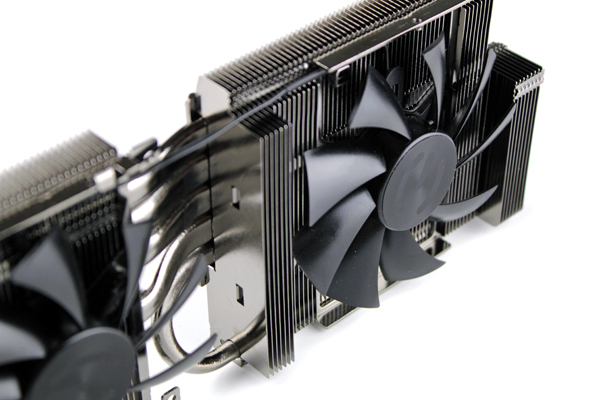
A poor blade design generates more noise but, this particular 9-blade fan seems to be up to the job. EVGA says that the blades are up to 700% more rigid than fan blades used in competing fans, which also results in a 25% weight reduction. We can report that the blades feel very strong indeed.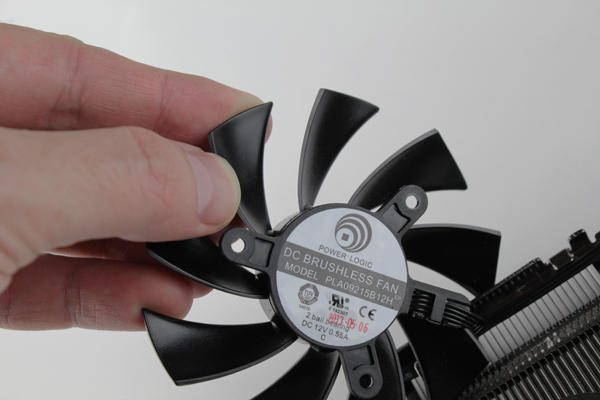
The fan uses a double ball bearing design. The noise generated by ball bearing designs tends to be very low, at least while they are new. However, since this fan uses two ball bearings it should last a bit longer and generate a less noise even after a couple of years of wear.
This is what the bearings look like in real life, opposed to standard sleeve bearings used in most fans. 



